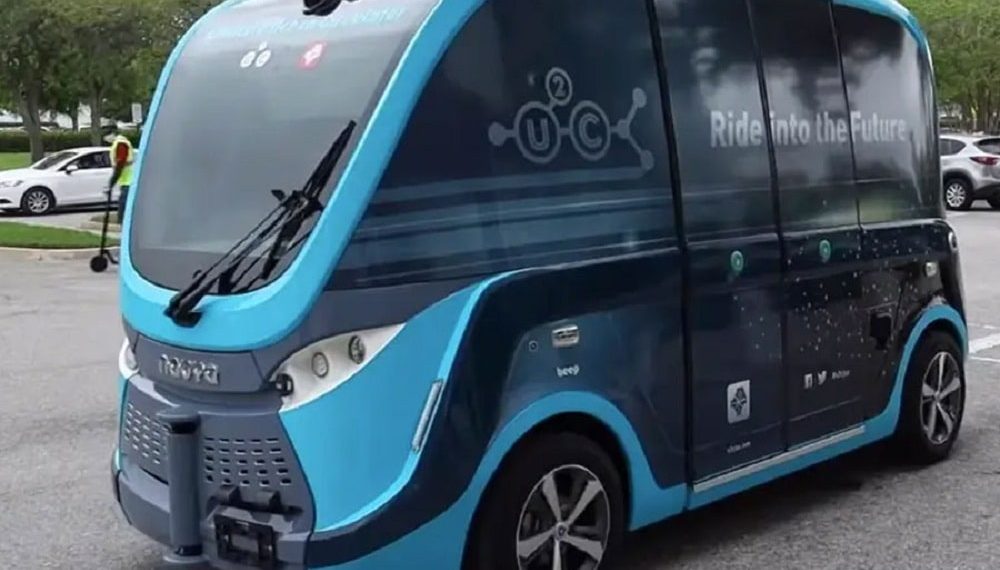Autonomous shuttles are being used to move COVID-19 tests from a Jacksonville, Florida testing site to a nearby Mayo Clinic processing location, in what the medical nonprofit is calling a “first” for the US. But as is often the case with autonomous vehicle pilot programs, there’s a catch: during each run made to and from the clinic, the self-driving shuttles are being trailed by an SUV driven by a human.
The SUV can be spotted in a video released by the Mayo Clinic (seen above), after one of the Mayo Clinic workers loads the cooler of tests onto the self-driving shuttle. The SUV then follows the shuttle across the Mayo Clinic’s campus, where the batch of fresh tests is swapped for another cooler. Four of these vehicles have made the same run back and forth each day since March 30th.
In a statement provided to The Verge, Joe Moye, the CEO of autonomous vehicle operator Beep, said the Jacksonville Transportation Authority is providing the chase vehicles to “ensure no traffic or pedestrians would potentially impact the delivery path of the COVID-19 samples and supplies.” That’s despite the fact that the Mayo Clinic’s press release says the routes the shuttles are running “are isolated from pedestrians, traffic and staff.”
A representative for Beep, which worked with the Mayo Clinic, JTA, and self-driving shuttle builder Navya on the pilot, says that putting the tests in the attendant-less shuttle instead of in an SUV or truck being driven by a human helps limit any potential exposure to the novel coronavirus. And judging from the distance covered in the video released by the Mayo Clinic, it does look like using some sort of vehicle — autonomous or not — would indeed help speed up the delivery of the tests to the processing site. Another benefit, according to Moye, is that the shuttle helps keep many Mayo Clinic staff as free as possible, since they would otherwise have to transport the samples themselves.
The Mayo Clinic also “wanted to have as many precautions in place as possible,” according to David Cawton II, the communications director for JTA. Since JTA has been using these autonomous shuttles for a few years with attendants on board, Cawton II said the agency believes it’s collecting valuable information and experience “even if this service is operating with an extra layer of human oversight or remote interaction.”
Still, humans aren’t as fully out of the delivery loop as it may seem. Aside from the shadow cars, Beep, the Mayo Clinic, and the JTA are also “closely monitor[ing]” the shuttles from a “mobile command center” to make sure there are no problems with the deliveries.
Getting tests done quickly and safely is a huge priority right now, especially considering how long it took the US to spin up a serious testing regime. But the new autonomous shuttle-aided effort in Florida is just the latest example of how hard it still is to totally remove humans from the task of driving — even during a pandemic, when corners are sometimes allowed to be cut and rules can be changed or rewritten entirely.


































